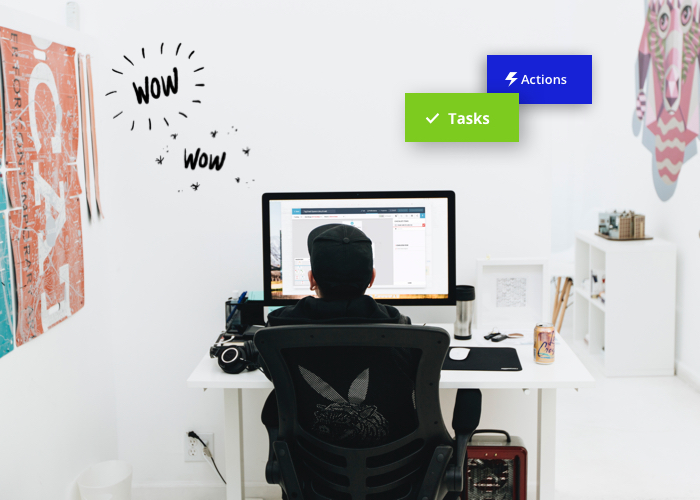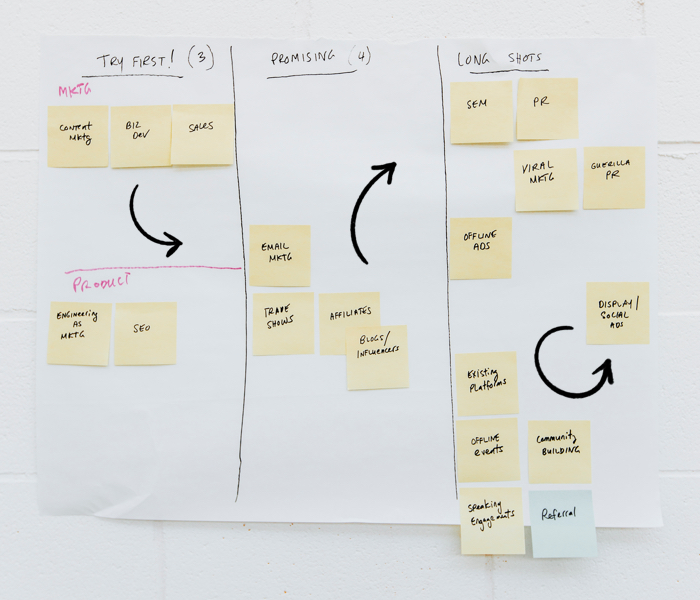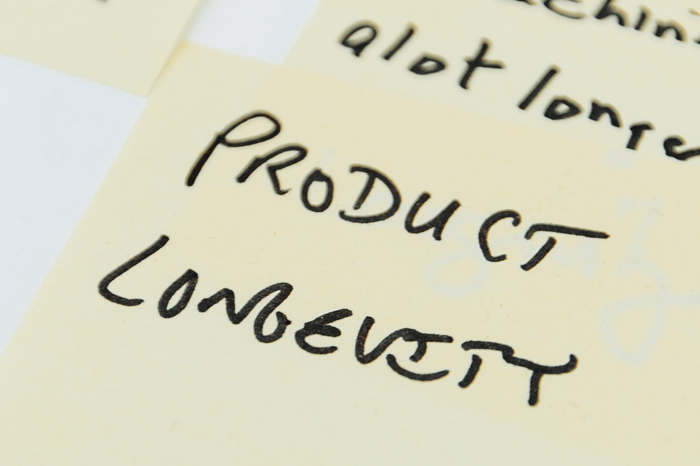You’ve got a customer. Now what? The relationship doesn’t end when someone clicks the “buy” button; in fact, it’s really just beginning.
At the end of the Convert stage, you began transitioning into the Fulfill stage by delivering your newly purchased product or service, whether by email, mail or in person. Now it’s time to serve your new customers to the best of your ability, add more value, ensure their success with your product, and instill confidence in their choice to buy from you.
Succeeding at this step is the crux of your business; this is where you’re delivering on the mission of your company.
The Fulfill stage includes all funnels intended to manage onboarding and the initial client experience; delivering an incredible customer experience early on is critical for long-term retention. Although promoting paid upsells might seem to fit in this stage, that will come later.
Your first priority for new customers should be to encourage them to use the product or service they purchased and to take advantage of any free resources and services you provide so they can get the most out of their purchase. Offering these resources and staying in touch to ensure they’re satisfied with their purchase reiterates your value and sets the tone of your relationship.
Customer success consultant and author Lincoln Murphy wrote in his blog Sixteen Ventures, “The early days of your relationship with your customer are critical; whatever analogy you want to use (planting seeds, laying a foundation, etc.), just know that whatever happens in the first stage of engagement … really does impact the long-term growth of your customer as a customer.”
Investing in the initial success of your customers pays off later in the customer lifecycle: It not only keeps them coming back for repeat business, it inspires them to refer more customers to you. As Murphy wrote in another blog post, “You make sure your customers are successful and they’ll make sure you’re successful.”
On the other hand, if you lose customers at this critical stage, you’ve likely lost them forever. In fact, according to iperceptions, 32% of customers stop doing business with a brand they love after only one bad experience.
Engineering your onboarding process
Because this phase is all about encouraging your customers to successfully use your product or service, you can consider someone “onboarded” once they are either getting value from the consumption of the product or service or, if your product or service is more complex or long-term, they see the value potential of their relationship with you.
“What this means is that you have to identify the point where they first get value — where they first start to achieve their goals,” Murphy wrote. “This is the time they first start achieving the things that are going to make sure that they’re on the road to their desired outcome.”
Once you’ve identified where your customers start seeing value from your brand, you can reverse engineer your onboarding process by determining what the customer needs to get to that point. If you have a membership site, is completing the first lesson going to give them a new perspective and, therefore, make them realize your potential and draw them in further? If you own a gym, is experiencing that rush of adrenaline and stress relief the thing that works for your customers, or is it losing a certain amount of body fat? Your communication and outreach methods will be focused on getting customers to achieve those milestones.
Customer feedback surveys
You can determine what this “Aha!” moment is by asking your customers via surveys. Surveys can give you insight into what your customers’ desired outcomes from your product are so that you can better understand their needs and build success milestones around it — as well as adjust your marketing if needed to speak to those desires.
This will set you up for success in later stages of the customer lifecycle. As Murphy states, “Keeping this ‘success milestone’ way of thinking after they become a customer — or are otherwise past the customer onboarding process — will allow you to surface upsell/cross-sell offers, as well as advocacy requests, at the perfect time so you’re more likely to get a positive result.”
Your survey can also measure the level of satisfaction your customers have experienced with your company and product so far — what they like or don’t like about your product and any specific needs they have that would help them in reaching their goals.
All of this information can support your understanding of how to enhance your onboarding process. If you use a marketing automation software to facilitate the survey via a form on a landing page, all the response data will be easily accessible and stored in your customers’ contact records so that you have it all in one place.
Types of onboarding funnels
Once you understand which milestones you’re aiming to get your customers to achieve, you can create your onboarding plan. The way you onboard a customer will also vary depending on the type of product or service you sell and your industry.
For example, a software company might offer an online training site with step-by-step videos on how to use specific features; a wedding planner might start with an introductory welcome call, and a massage therapist might send targeted emails with guidance on at-home stretches for muscle pain relief or tips for stress relief to get the customer started.
Here are details on six common ways to onboard customers:
Targeted follow-up emails: These emails are akin to the three bonus emails you send immediately after purchase. You’ll have a different follow-up funnel for each of your products or services, with related, value-add content in each. The content might include links to your blog articles, videos, podcasts, guides or worksheets. When choosing what to send for each customer segment, think about Amazon’s “if you like this, you might like …” concept, and apply it to your own content.
Product tutorials: If you’re selling a product or service that requires some light-to-medium instruction, direct your new customers to a dedicated product tutorial page post-purchase via a series of automated onboarding emails.
Training site: If your product is more complex, you can create a membership site to host a series of sequential lessons and courses aimed at bringing your new customers up to speed and using your product or service to its full potential. You’ll deliver login credentials to your new customers in an initial welcome email and encourage them to get started.
One-on-one onboarding call: Ideal for those offering personal or professional services or products with long-term usage, a phone call is a great way to make an initial connection and provide individualized guidance to your new customers based on their needs and interests. In your welcome email, you can prompt customers to schedule a call using calendar integrations in your marketing automation software. After the call, you can send a summarizing email with details on where they can go for more information.
Welcome call: A welcome call not only makes new customers feel appreciated, it gives them the opportunity to ask any burning questions about your product or service before diving in. This personalized attention starts the relationship on a positive note and might give your customer the extra boost to start using your product or service.
Order fulfillment: If you ship physical products, consider including instructions, a personalized message and/or a small gift to make customers feel special and encourage them to get started with the product. If you offer a digital product or service, you can still onboard customers via physical instructions or a welcome gift that supplements the service.
No matter which route you go, it’s common to begin with a welcome email. Your welcome email might include encouragement to your customers to join and introduce themselves in your Facebook community, links to follow you on social media so they stay in-the-know about your promotions, an introductory video from you or someone from your team, or links to an FAQ and contact information for your customer support team. Also, give them a heads up that you’ll be staying in touch with more information on how to use the product or related bonus content.
Creating your onboarding campaign
This onboarding campaign example involves three tactics discussed in this article — a one-on-one onboarding call, targeted follow-up emails, and a customer feedback survey — and can be applied to a variety of business types.
Here’s how it works: Once customers purchase your product, they receive a welcome email and then are sent three bonus emails over the following few days that provide useful content related to the product they purchased — perhaps educational content about how to get started or content on a related topic that further supports your expertise and value.
Customers will also be sent down a path to participate in an onboarding call with you or a member of your team. This is where you’ll welcome the customers, gain an understanding of their goals, provide personalized guidance to get them started, and answer any questions they may have.
Two weeks after purchasing your product, customers will receive a new client survey that seeks to understand how their experience has been thus far. You’ll use the responses to improve your onboarding process and, if you receive a negative response, a task will be triggered for you to call the customer to rectify the issue and bring the customer back on board.
Now that you’ve learned about the Fulfill stage, you’re ready for Part 4: Delight.
